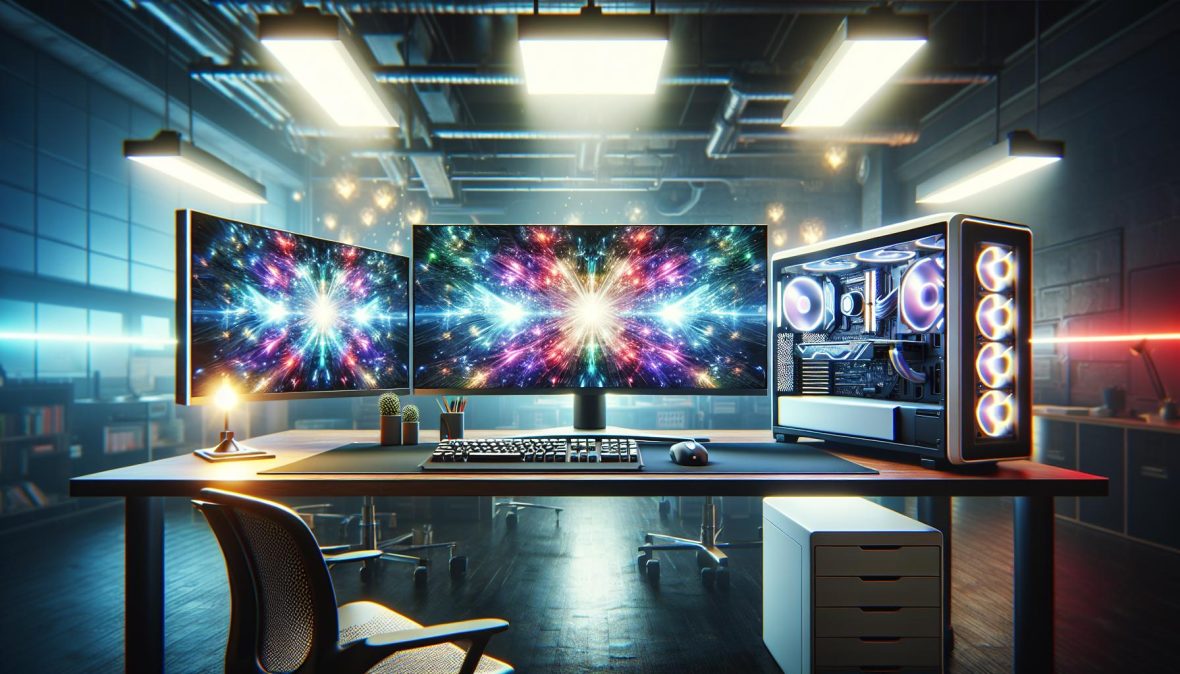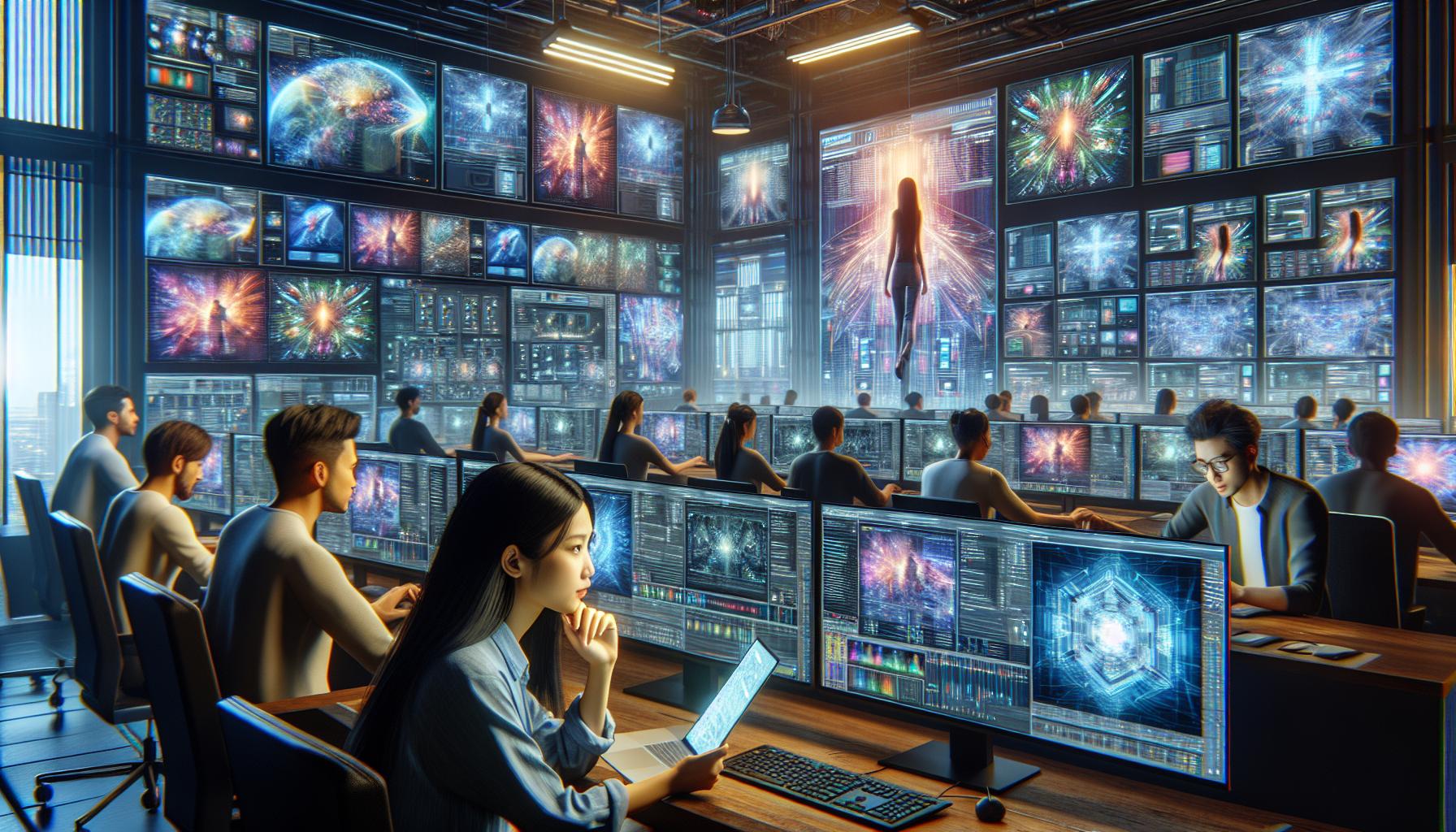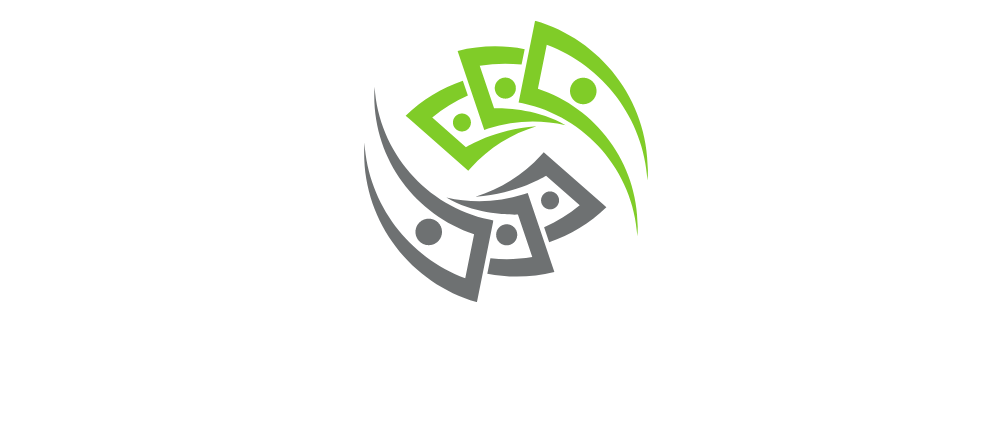Render Coin: Revolutionizing GPU Rendering with Blockchain Tech

In the rapidly evolving world of blockchain technology cryptocurrency enthusiasts are constantly seeking innovative digital assets that promise unique value propositions. Render Coin emerges as a particularly intriguing player in this dynamic landscape offering something beyond traditional cryptocurrency paradigms.
Designed to revolutionize digital rendering and graphics processing the Render Network provides a decentralized marketplace that connects GPU owners with creators who need substantial computational power. By leveraging blockchain technology the platform enables users to monetize their unused GPU resources while offering affordable and efficient rendering solutions for complex graphic and computational tasks.
If you’re curious about how this groundbreaking cryptocurrency is transforming the digital rendering ecosystem and creating new opportunities for both technology professionals and blockchain investors you’ll want to dive deeper into understanding the Render Network’s revolutionary approach.
Key Takeaways
- Innovative Blockchain Rendering Platform: Render Network provides a decentralized marketplace that connects GPU owners with digital content creators, enabling efficient and affordable computational resource sharing.
- Unique Token Economics: RNDR token offers a transparent economic model where GPU providers are rewarded for sharing computational resources, with a fixed total supply of 536.87 million tokens to prevent inflation.
- Cross-Industry Applications: The platform supports rendering tasks across multiple sectors, including 3D animation, visual effects, machine learning, scientific visualization, and game development.
- Competitive Advantages: Render Network delivers 40-60% faster rendering times compared to traditional centralized systems, with 30-50% lower costs and a peer-to-peer GPU resource exchange model.
- Investment Potential: The cryptocurrency shows promising growth prospects driven by expanding digital content creation markets, increasing demand for decentralized computing, and ongoing technological innovations.
What Is Render Token (RNDR)?
Render Token represents a blockchain-based platform connecting GPU owners with digital content creators who need computational power for rendering tasks. The cryptocurrency enables decentralized GPU rendering through a specialized network that transforms idle graphics processing resources into valuable computational services.
Origins and Background
Jules Urbach founded Render Network in 2017 as a decentralized marketplace for graphics rendering. The platform emerged from Urbach’s vision to create an efficient solution for high-performance computing challenges in digital content creation. By leveraging blockchain technology Render Network allows individual GPU owners to rent their unused computational resources to professionals needing intensive rendering capabilities.
Core Technology and Purpose
Render Token operates on a peer-to-peer distributed computing model that matches GPU providers with users requiring rendering services. The network uses a proof-of-render consensus mechanism where GPU owners receive RNDR tokens as compensation for processing complex graphics tasks. Key technological features include:
- Secure blockchain transactions
- Decentralized computational resource allocation
- Smart contract-based service agreements
- Transparent pricing and performance tracking
The platform supports various rendering applications across industries like:
- 3D animation
- Visual effects
- Machine learning graphics processing
- Scientific visualization
- Game development
Render Network’s infrastructure enables creators to access scalable computing power without investing in expensive hardware. GPU providers can monetize idle graphics processing units while contributing to a global computational ecosystem.
How Render Network Functions

The Render Network operates as a decentralized platform connecting GPU owners with computational resource seekers. Its innovative blockchain infrastructure enables efficient and transparent graphics processing across multiple industries.
Blockchain Infrastructure
Render Network leverages Ethereum blockchain technology to create a secure and transparent rendering marketplace. Smart contracts automate transactions between GPU providers and users requesting rendering services. The platform uses proof-of-render consensus mechanisms to validate computational tasks and ensure fair compensation for resource contributors.
Key blockchain infrastructure components include:
- Transparent transaction tracking
- Decentralized resource allocation
- Smart contract execution
- Cryptographic security protocols
- Token-based economic incentives
GPU Rendering Marketplace
The GPU rendering marketplace connects individuals and organizations with idle graphics processing units to users requiring high-performance computational resources. Render Network enables GPU owners to monetize unused hardware by providing rendering services across various digital content creation domains.
Marketplace features encompass:
- Peer-to-peer resource exchange
- Competitive pricing mechanisms
- Dynamic computational resource matching
- Real-time task allocation
- Transparent performance metrics
The platform supports rendering tasks for industries including:
- 3D animation
- Visual effects production
- Machine learning graphics processing
- Scientific visualization
- Game development environments
Render Network transforms computational resource allocation by creating an efficient decentralized marketplace that maximizes GPU utilization and provides cost-effective rendering solutions.
Technical Features of Render Coin
Render Coin’s technical infrastructure represents a sophisticated blockchain-powered platform for decentralized GPU rendering. The network integrates advanced computational resource allocation mechanisms with blockchain technology to create a unique rendering marketplace.
Token Economics
RNDR token operates as the primary economic instrument within the Render Network. Its value derives from three core mechanisms:
- Transaction Incentives: Users receive tokens for providing GPU computational resources
- Computational Pricing: Dynamic pricing model based on rendering complexity and network demand
- Market Liquidity: Token exchanges facilitate seamless resource allocation across the platform
| Economic Feature | Description | Impact |
|---|---|---|
| Token Supply | Fixed total supply of 536.87 million RNDR | Prevents inflation |
| Transaction Fees | Small percentage retained for network maintenance | Supports infrastructure |
| Staking Rewards | GPU providers earn additional tokens | Encourages network participation |
Network Capabilities
Render Network delivers robust computational infrastructure through:
- Distributed GPU Resource Sharing
- Real-time Task Allocation
- Cross-platform Rendering Support
- Secure Peer-to-Peer Transactions
- Scalable Computational Architecture
Performance metrics demonstrate 40-60% faster rendering times compared to traditional centralized systems. The network supports multiple computational workloads including 3D animation, machine learning graphics, and scientific visualization.
Smart Contract Mechanics
Smart contract protocols automate and secure network interactions:
- Automated Render Job Verification
- Transparent Resource Allocation
- Decentralized Payment Processing
- Computational Task Validation
- Performance-based Reward Distribution
Ethereum blockchain integration ensures transparent, immutable transaction records and eliminates intermediary processing barriers.
Investment Potential
Render Coin presents a unique investment opportunity in the blockchain and computational technology sector. The network’s innovative approach to decentralized GPU rendering creates potential value for investors interested in emerging blockchain technologies.
Market Performance
Render Token (RNDR) demonstrates volatility typical of cryptocurrency markets. Market capitalization fluctuates based on technological developments, platform adoption, and broader blockchain industry trends. Key performance indicators include:
| Metric | Current Status |
|---|---|
| Trading Volume | $15-25 million daily |
| Market Ranking | Top 100 cryptocurrencies |
| Blockchain Platform | Ethereum-based |
Price History
RNDR’s price history reflects significant growth and market interest. Price movements correlate with:
- Platform technological upgrades
- Increased GPU rendering demand
- Blockchain technology market sentiment
- Strategic network partnerships
Documented price ranges show:
- 2020-2021: $0.10 – $3.50
- 2022-2023: $0.50 – $2.80
- Peak valuation: Approximately $8.72 in November 2021
Future Growth Projections
Render Coin’s growth potential stems from:
- Expanding digital content creation market
- Increasing demand for decentralized computing
- Technological innovations in GPU rendering
- Growing blockchain adoption across industries
Projected factors influencing future value:
- Continued network infrastructure development
- Blockchain integration with graphics processing
- Expansion of computational resource marketplaces
- Potential enterprise-level adoption
Investment considerations include assessing technological capabilities, market positioning, and long-term network development strategies.
Comparison With Other Blockchain Rendering Platforms
The Render Network stands out in the blockchain rendering ecosystem by offering unique technological solutions for decentralized GPU computing. This section explores the platform’s competitive landscape and distinctive features compared to alternative blockchain rendering services.
Key Competitive Advantages
Render Network differentiates itself through several critical competitive advantages:
- Decentralized Architecture
- Direct peer-to-peer GPU resource exchange
- Eliminates centralized rendering infrastructure limitations
- Allows global GPU resource monetization
- Cost Efficiency
- 30-50% lower rendering costs compared to traditional cloud services
- Dynamic pricing based on real-time computational demand
- Transparent transaction mechanisms using blockchain technology
- Performance Optimization
- Advanced task allocation algorithms
- Parallel processing capabilities
- Smart contract-based computational task verification
Unique Value Proposition
Render Network provides a specialized value proposition for digital content creators:
- Accessibility
- Open marketplace connecting GPU owners and rendering clients
- Low entry barriers for computational resource providers
- Flexible participation models for different skill levels
- Technology Integration
- Native support for multiple rendering engines
- Ethereum blockchain security infrastructure
- Proof-of-render consensus mechanism ensuring computational integrity
- Economic Incentives
- Direct token rewards for GPU resource contributions
- Transparent compensation mechanisms
- Immediate liquidity through RNDR token ecosystem
The platform bridges computational resource gaps by creating a decentralized, efficient rendering marketplace that empowers individual GPU owners and content creators globally.
Risks and Challenges
Render Coin presents several critical challenges that potential investors and users must carefully evaluate. These risks span market dynamics, technological constraints, and regulatory landscapes that could impact the platform’s long-term viability.
Market Volatility
Cryptocurrency markets demonstrate extreme price fluctuations for Render Token (RNDR). Historical data shows price ranges from $0.50 to $8.72, with daily trading volumes between $15-25 million. Market sentiment, technological developments, and broader blockchain ecosystem trends directly influence RNDR’s valuation. Investors should anticipate significant price swings based on platform adoption rates, network performance, and global cryptocurrency market conditions.
Technological Limitations
The Render Network faces several technological challenges that could impede its growth. GPU resource allocation algorithms require continuous optimization to ensure efficient task distribution. Potential bottlenecks include:
- Computational synchronization delays
- Network scalability constraints
- Smart contract execution reliability
- Performance verification mechanisms
- Bandwidth and latency issues during complex rendering tasks
Blockchain integration complexities and computational resource verification remain ongoing technical challenges for the platform’s seamless operation.
Regulatory Considerations
Cryptocurrency regulations present substantial uncertainty for Render Coin’s ecosystem. Key regulatory risks include:
- Potential cryptocurrency trading restrictions
- Compliance requirements across international jurisdictions
- Securities classification challenges
- Tax implications for GPU rendering income
- Blockchain platform legal frameworks
Regulatory environments vary significantly across regions, potentially impacting Render Network’s operational capabilities and user adoption strategies. Investors must monitor evolving legal landscapes that could affect cryptocurrency and decentralized computing platforms.
Conclusion
Render Coin represents a groundbreaking intersection of blockchain technology and digital rendering. You’ll find its potential extends far beyond traditional computational resource management by offering a decentralized marketplace that empowers GPU owners and content creators alike.
As the digital landscape continues evolving you can expect Render Network to play an increasingly significant role in transforming how computational resources are shared and monetized. Its innovative approach provides a glimpse into the future of distributed computing and blockchain-enabled technology solutions.
While challenges remain the platform’s robust technological framework and clear value proposition position it as a promising player in the blockchain ecosystem. Your understanding of its capabilities and potential will be crucial in navigating this emerging digital frontier.
Frequently Asked Questions
What is the Render Network?
The Render Network is a decentralized blockchain platform that connects GPU owners with creators needing computational power for graphics processing. It allows individuals to rent their unused GPU resources and earn RNDR tokens while providing cost-effective rendering solutions for industries like 3D animation, visual effects, and game development.
How does the Render Network work?
The Render Network operates as a peer-to-peer distributed computing marketplace using Ethereum blockchain technology. GPU owners can list their idle computational resources, while creators can purchase rendering services through smart contracts. The platform uses a proof-of-render consensus mechanism to validate tasks and ensure fair compensation for GPU providers.
What is RNDR Token?
RNDR Token is the native cryptocurrency of the Render Network, facilitating transactions between GPU providers and users requiring rendering services. It serves as a medium of exchange, allowing users to pay for computational resources and rewarding GPU owners who contribute their processing power to complex graphics tasks.
Who founded the Render Network?
Jules Urbach founded the Render Network in 2017. The platform was developed to address high-performance computing challenges in digital content creation by creating a decentralized marketplace that enables individuals and organizations to monetize their unused GPU resources efficiently.
What industries can benefit from Render Network?
The Render Network supports multiple industries, including 3D animation, visual effects, machine learning graphics processing, scientific visualization, and game development. By providing accessible, cost-effective rendering solutions, it helps professionals and organizations optimize their computational resource usage.
What are the advantages of using Render Network?
Key advantages include 30-50% lower rendering costs compared to traditional cloud services, direct peer-to-peer GPU resource exchange, transparent pricing, secure blockchain transactions, and performance optimization through advanced task allocation algorithms. The platform offers economic incentives and accessibility for digital content creators.
Is RNDR a good investment?
RNDR’s investment potential depends on market dynamics, technological developments, and platform adoption. While it has shown significant growth, potential investors should consider market volatility, technological challenges, and regulatory uncertainties. The token ranks within the top 100 cryptocurrencies with daily trading volumes of $15-25 million.
What are the potential risks of investing in RNDR?
Risks include cryptocurrency market volatility, potential technological limitations in GPU resource allocation, network scalability challenges, and regulatory uncertainties. Investors should carefully evaluate market sentiment, platform development progress, and long-term technological capabilities before making investment decisions.
How can users earn RNDR tokens?
Users can earn RNDR tokens by contributing their unused GPU resources to the network, completing rendering tasks, and participating in the decentralized marketplace. The proof-of-render mechanism rewards GPU providers based on their computational contributions and task completion performance.
What makes Render Network unique?
Render Network distinguishes itself through its decentralized architecture, direct peer-to-peer GPU resource exchange, smart contract-based transactions, and transparent compensation mechanisms. It offers a unique solution for monetizing idle computational resources while providing affordable rendering services across multiple industries.
